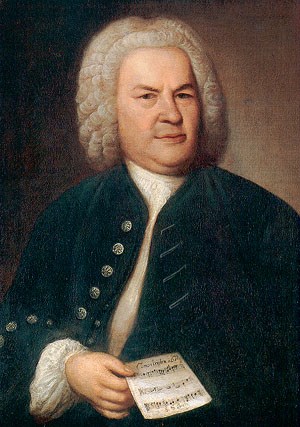Joe Krause Music
Johann Sebastian Bach (1685-1750)
German, Baroque period

Bach was possibly the world's most proficient composer of the fugue. A fugue is a piece where:
- There are multiple independent lines, known as voices, that sound simultaneously. Typically, fugues will have 3 or 4 voices. The writing of multiple independent lines while following rules and procedures to ensure they sound effective together is known as counterpoint.
- There is a specific melody, known as the subject. This melody is stated by each voice when it enters the fugue.
- There are a variety of techniques, modulations, and other intricacies that a composer can employ in a fugue, but these are the fundamentals that should be understood first.
Fugue in C major, BWV 846
Each voice is visualized in a different color. Note that each one enters with the same melody (not always in the same key though!)
Fugue in B flat minor, BWV 867
In this fugue, there are FIVE voices! Bach had to be extremely careful when writing this fugue to ensure that 1. All five voices sounded good with each other without breaking any counterpoint rules, and 2. It could all still be played by a pianist with just two hands!
This video visualizes each subject with a small spiral for extra clarity. Towards the end, there's an overlap of the subjects (known as a stretto) of all five voices!!!
Prelude and Fugue in E flat major BWV 552 ("St. Anne Fugue") for organ
Fugue starts at 9:18